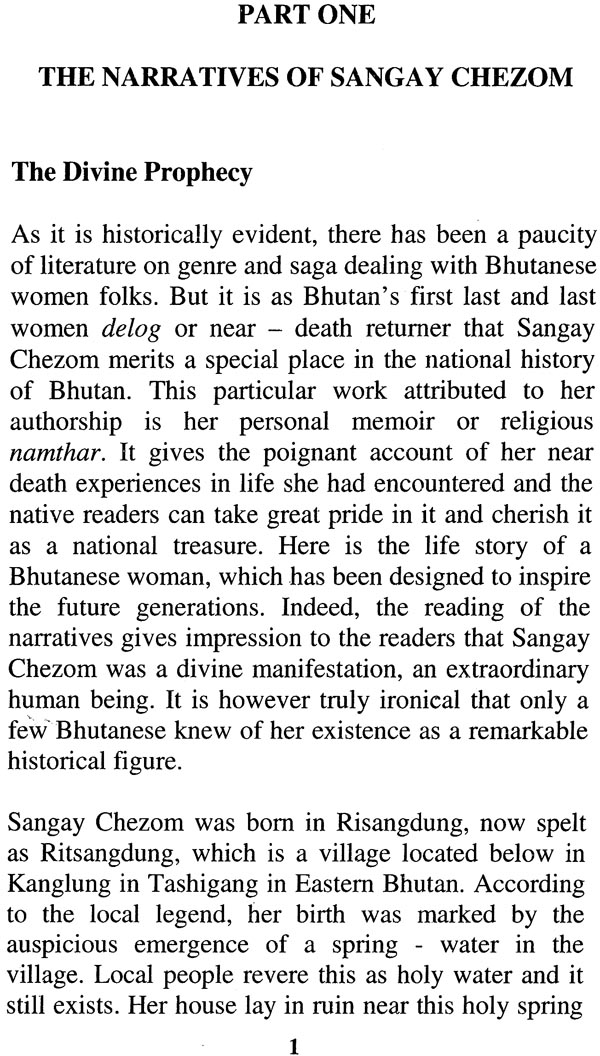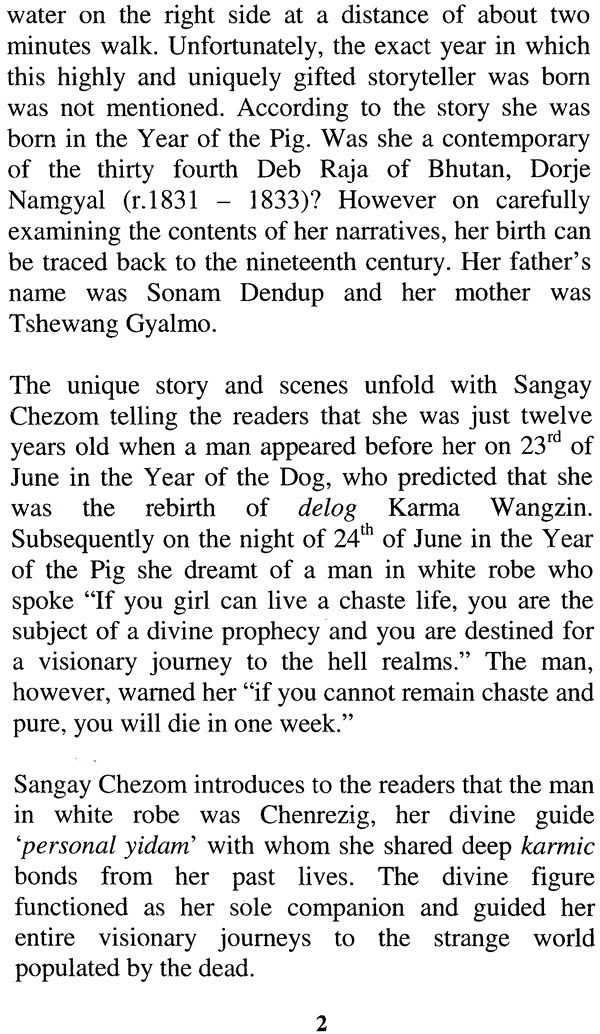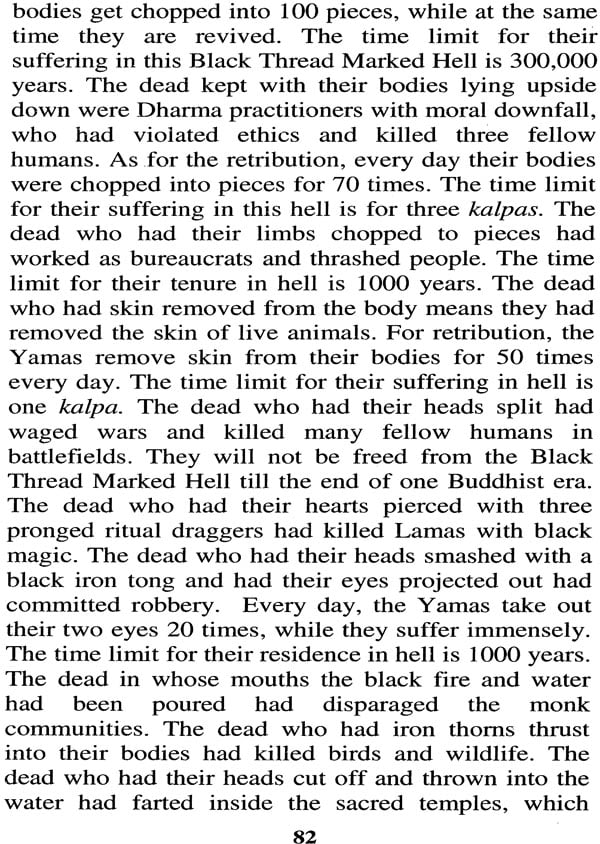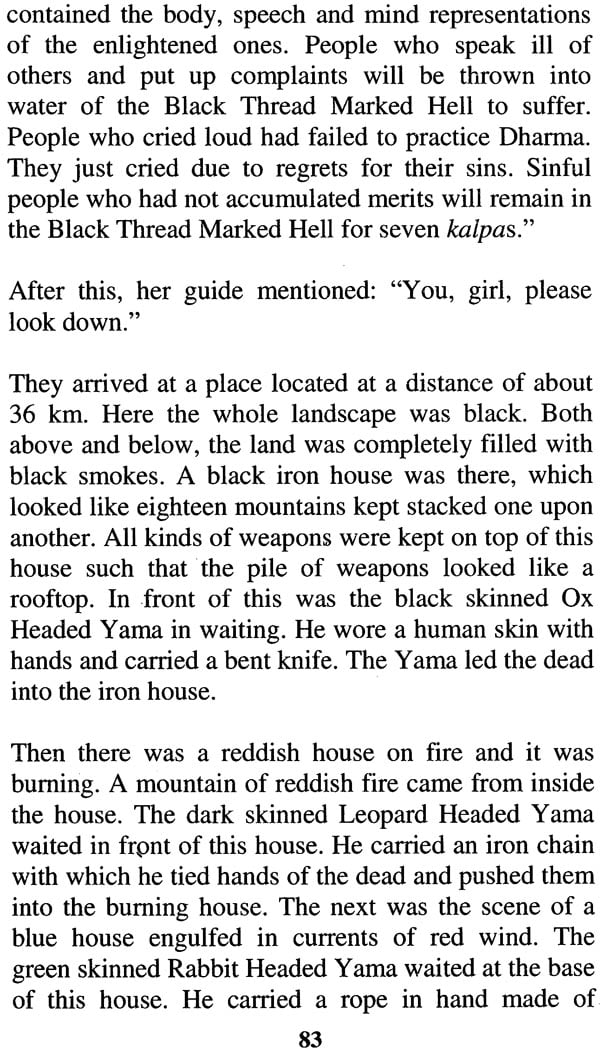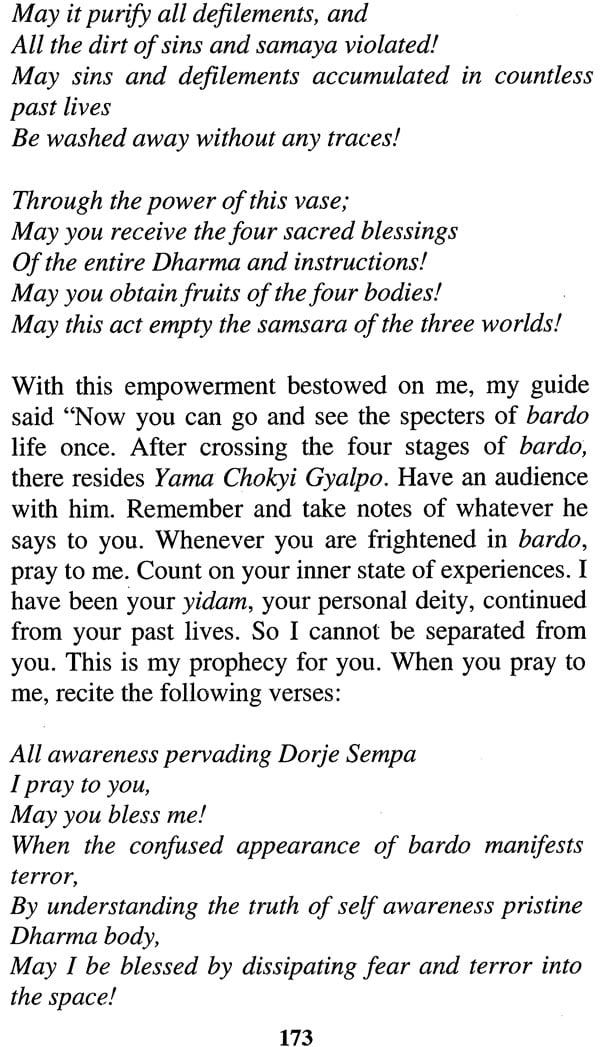
The Narratives of Sangay Chezom and Jalue Repa
Book Specification
| Item Code: | NAO681 |
| Author: | Tshering Gyeltshen Kharchungpa |
| Publisher: | M/S Kuensel Corporation, Bhutan |
| Language: | English |
| Edition: | 2013 |
| ISBN: | 9789993684701 |
| Pages: | 210 |
| Cover: | Paperback |
| Other Details | 8.5 inch X 6.0 inch |
| Weight | 250 gm |
Book Description
Tshering Gyeltshen Kharchungpa (alias Tshering Gyeltshen), the translator of the text, worked as a civil servant of the Royal Government of Bhutan (email: tg.kharchungpa@gmail.com).
Cover photo by Tashi D.Wangmo: A glimpse of Ritsangdung village in Tashigang, Eastern Bhutan where, Bhutanese woman Sangay Chezom, was born.
The narratives of Bhutanese delog, the near death re-turner Sangay Chezom, have been designed to remind the mortals that human life does not end with one time birth and death and that there is an after death life to be lived in some forms different from the present, although as another delog, Lingsa Cheki implies 'human rebirth is not always guaranteed'. Lingsa warns her fellow humans that for some 'this would be the end of human life'. Of course, for Buddhists human rebirth is always precious and more favored as it provides very rare opportunity for perfection and liberation.
The idea of good living is of paramount importance for humans, regardless of a person's faith or differences in social, cultural and educational upbringing, and whether or not he or she believes in karma and after death life. Everyone creates karma, whether it is for good or bad. Everyone is answerable and accountable to the creation of his or her own karma. Good karma fetches happiness as rewards; bad karma is best epitomized by sufferings of the dead in hells. Since sufferings in hells are real, Lingsa Cheki warns her fellow humans that `hells are not myths'.
This book is organized into three parts. Part I and Part II contain English translations of the stories of delog Sangay Chezom and delog Lingsa Cheki originally written in simple, lucid and readable Choked or Tibetan. However the principle focus and subject of this translation work is Sangay Chezom, the only Bhutanese woman who was born as delog in Ritsangdung in Tashigang district of Eastern Bhutan in the nineteenth century.
The term delog' in Dzongkha and Tibetan means 'a person who has returned from death or near death.' There were many Tibetan delogs. Ashi Nangse was probably the first delog born in the Tibetan cultural world.
Part III is an English translation of Lama Jalue Repa's work which provides a brief account of his visit to bardo realms in dreams. The epithet Jalue Repa stands for Buli Trulku Khachab Namkha Dorje, who was born in 1883 in Choeje family at Buli Gonpa in Bumthang district of Bhutan. It was Lama Dorje Tenzin Rinpoche, who had used this epithet in memory of his father, who was believed to have attained one form of Jalue `partial rain body transformation after death' called Oelue. Later in life Buli Trulku had settled in Aja, Mongar in Eastern Bhutan. He died in Yarab, Mongar in 1941 at the age of 59. This visionary Lama was not delog in the conventional sense but he was uniquely gifted with spiritual power. His narratives provide a rare account of his visit to the bardo world in dreams. The text is cryptic and highly inspiring. It has been handed down to his grand children in the family. This English translation is a welcome addition for the readers.
The English translation on Sangay Chezom was brought out with the main aims to introduce her to the wider audience of English speaking readers, as an historical woman figure, the only Bhutanese woman delog, who claimed to have returned from near death.
Her autobiography of death contains the quintessence of Buddhist views on death and after death life. The narratives contain a very rich portrayal of all that modern generations need to know about general ethics, thadamtshig 'ethics binding human relationships' and ley judre 'karma'.
The book also offers practical experiences and down to earth portrayal of what can happen to anyone after death as viewed through the cultural lenses of the delog. However the manuscript stands as a marked contrast to many theoretical lessons and conventional literature on philosophically abstract subjects like karma, bardo and death.
| Preface | ii | |
| 1 | Part One: The Narratives of Sangay Chezom | 1 |
| The Divine Prophecy | 1 | |
| The Journey Beyond | 7 | |
| Hot Hells and Cold Hells | 41 | |
| Beast Hells | 52 | |
| Fleeting Glimpses of Paradises | 104 | |
| Final Prophecies and Instructions | 122 | |
| The Mission Accomplished | 132 | |
| 2 | Part Two: An Abridged Story of Lingsa Cheki | 136 |
| 3 | Part three: Jalue Repa's Visit to Bardo in Dreams | 166 |
| 4 | Glossary | 183 |
